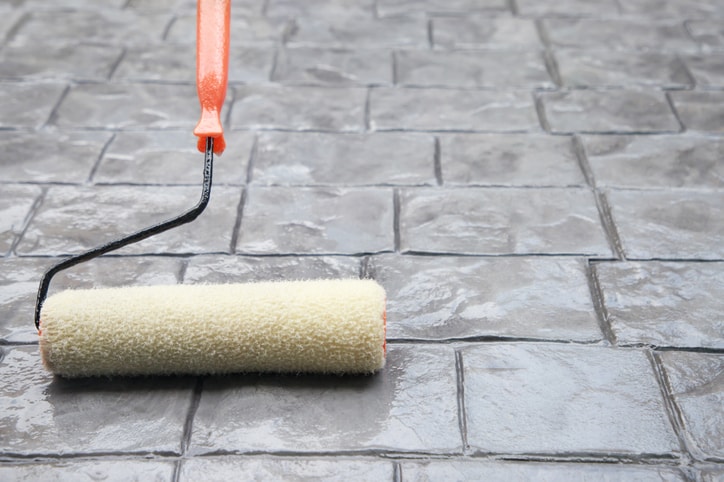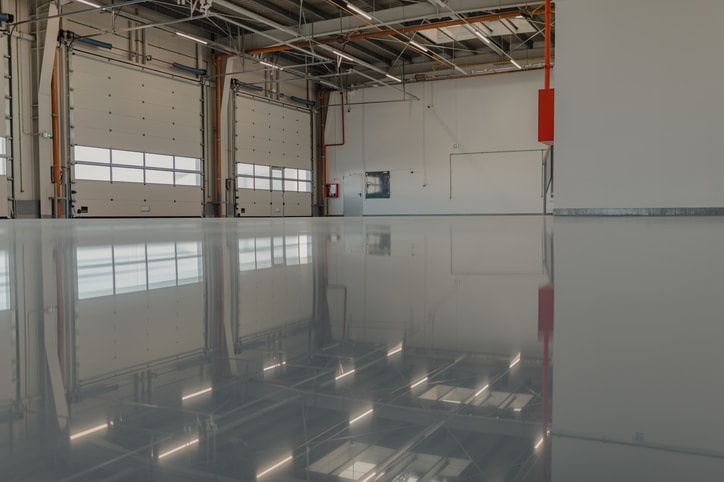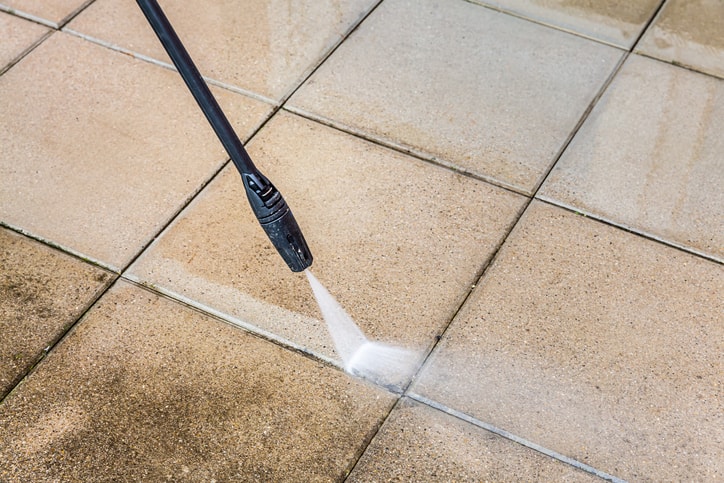
Recently, we published an article about how control joints can reduce the risk of cracks in concrete surfaces. Having those installed isn’t the only step you can take to ensure walkways and driveways stay looking good, without any unwanted blemishes like cracks.
If you want to further protect your property, you should use concrete sealers. These may seem like nothing more than an extra cost, but they end up saving you time and money in the long run.
What Are Concrete Sealers?
If you get on the ground and look closely at the concrete floor, you’ll see it’s very porous. There are tons of tiny little holes. It’s almost like a sponge.
If water, oil, deicing salts, or any other type of unwanted element seeps into those pores, that can cause damage to the entire structure.
That’s where concrete sealers come in. They are chemicals that block moisture and other elements from seeping into your concrete. The way they work depends on their type. Some of them just block the pores. Others strengthen your concrete by reacting with chemicals from within.
It’s important to apply concrete sealer to concrete driveways or other concrete surfaces regularly.
How Sealers Can Prevent Cracks on Your Concrete Surface
Concrete sealers are especially good at preventing cracks that are formed from freeze-and-thaw damage in damp concrete. If the pores are unprotected, water will seep down into the concrete. In the winter, it will freeze, expanding the water. This causes the concrete to crack.
This is especially important in Oklahoma. Not only does it rain here, but we have a lot of moisture vapor that can contribute to this damage in your concrete.
Other Ways Concrete Sealers Protect Your Concrete
Another problem is mold. When the water gets into the deep layers, that can lead to mold growing from within, and that can break down the concrete over time.
But it’s not just the integrity of the concrete that sealers help out with. They are also great for making sure your driveway, walkway, or any other surface is looking great!
Even if things like sun damage, oil leaks, and excess mold don’t cause cracks, they can seriously discolor the beautiful concrete that you spent so much time and money on. That’s why when many homeowners get new concrete, they often make sure a sealer is applied.
What Type of Concrete Sealer Should You Use?
There are two basic types of sealers, penetrating sealers and topical sealers. The type that you choose depends on the look that you are going for.
If you want your concrete surface to have a little shine to it, then you’ll want a topical sealer. These are more often used on interior concrete floors.
But if you are applying a concrete sealer on your driveway — or anything else — and you don’t want anyone to see that you have applied it, you’ll want to use penetrating sealers. These ones blend into the concrete surface. No one would actually know it exists unless you told them.
Penetrating Concrete Sealers
Penetrating concrete sealers work by going into your concrete, where the chemicals form bonds with the structure. This keeps the concrete protected without changing how it looks at all. Chances are you’ve seen a lot of driveways that were sealed with this kind of sealer, and you didn’t even know it.
There are four basic types of penetrating sealers:
- Silane – A concrete sealer that’s water based. It’s able to go deep into the concrete and resists both mold and damage from freezing.
- Siloxanes – These are waterproof sealers. The individual molecules are larger, so they can’t go too deep, but this kind of concrete sealer is great for a surface that has a lot of pores. People will often combine this and silane sealers. The two combined will strengthen your concrete and protect it from water.
- Silicate – When this type of concrete sealer seeps into the concrete pores, it reacts with calcium and lime, forming calcium silicate hydrate. This strengthens the surface. Unfortunately, it’s not waterproof, so it’s not the best for outdoor surfaces.
- Siliconate – These type of concrete sealers are hydrophobic, so it repels water along with debris like mold, dirt, and salt. It’s an environmentally-friendly option because it’s usually water based and it doesn’t emit very many pollutants.
Topical Concrete Sealers

If you’ve ever seen a concrete surface inside a building, and you’ve noticed that it’s a little shiny, you’re likely looking at something that has been treated with a topical concrete sealer. They work by sitting on top of the surface and sticking to the pores, creating a film-like layer. That’s why you’ll also see these referred to as film-forming sealers.
There are three basic types of topical sealers:
- Acrylic sealers – An acrylic sealer is great for keeping dirt out of your concrete. It can used for both outdoor applications and indoor, and it can have different sheen levels. Acrylic sealers are a cost-effective option, and they don’t take too long to apply. The main drawback is they offer a thin coat, meaning it will wear down pretty easily. You’ll have to reapply it every once in a while.
- Polyurethane sealers – These type of concrete sealers work great in areas where a lot of people will walk around. You can get different levels of gloss, including getting some tint. They do a good job at protecting against chemicals.
- Epoxy Sealers – These concrete sealers are best for indoor areas where you need a durable concrete sealer. This can include places like a shopping center or parking garage. This one usually gives off a glossy finish, but you can also add chemicals to give it a matte look.
How To Apply Concrete Sealers

The first step is washing the concrete surface so there isn’t any dirt, grime, or anything else on it. A lot of people do this using a pressure washer. If there is already existing sealer, you’ll want to get it out. This means either using a chemical that can do so or using some kind of tool that either sands, grinds, or blasts it off. The latter way can create a lot of noise and it might cause damage to your surface.
Once all of that is washed off, you use another chemical called an etching solution. This makes it so the pores of your concrete open up, making them ready for the concrete sealer.
You’ll apply two thin coats to your concrete. After you apply the first layer, you’ll wait for it to dry. Then you’ll go through and apply the second coat.
When you apply these layers, you’ll want to make sure it is evenly distributed, and on the second coat, you’re going to go in the opposite direction that you went with the first coat.
When that is all done, you want to make sure the sealer is fully dry, and then you can resume normal activities on your concrete.
Hire People With Experience
Applying concrete sealers isn’t the most labor-intensive part of concrete work, but that doesn’t mean it’s easy. If you don’t know what you’re doing, you won’t end up with the protection that you want. That’s why we recommend hiring an experienced contractor to get the job done.
At OKCrete, we offer concrete sealer application as an upgrade that you can get with a new concrete project. We also offer services where we go out to existing surfaces and apply concrete sealers. If you’re in the Oklahoma City or Tulsa areas, request a quote today to get started with OKCrete.
